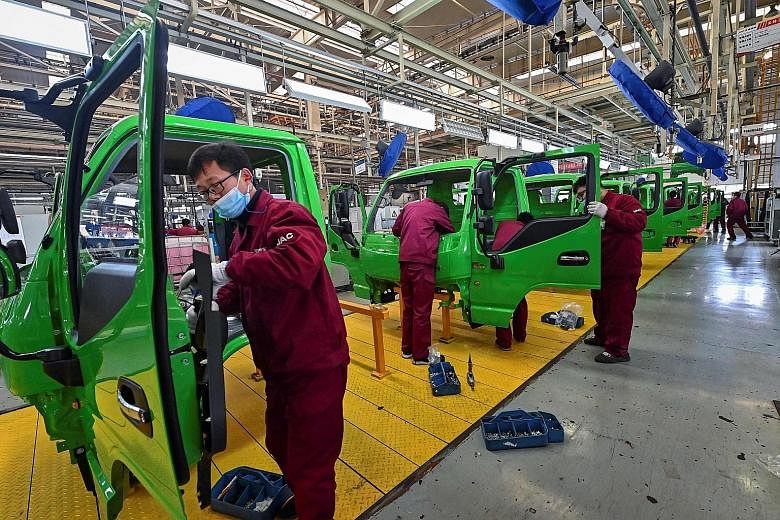BEIJING • China's economic activity surged in the first two months of the year compared with a year ago, although the figures showed an uneven recovery with strong industrial output fuelled by exports but consumer spending lagging.
The official data released yesterday showed eye-popping growth rates of more than 30 per cent for key indicators, largely due to distortions when compared with last year's shutdowns.
Industrial production growth of 35.1 per cent beat economists' expectations of 32.2 per cent, reflecting a shorter Chinese New Year holiday this year as the government encouraged workers to remain in factories rather than return to their hometowns.
Combined with strong export data for January and last month, the statistics showed that China has largely continued the pattern established last year of a recovery based on growth of industrial production for export and investment in sectors such as real estate, delaying Beijing's efforts to re-balance the economy towards domestic consumer demand.
Retail sales reported by China's statistics bureau climbed 33.8 per cent in the period, beating a forecast of 32 per cent in a Bloomberg poll of economists. On a two-year average basis, which corrects for the huge drop seen last year as China introduced pandemic restrictions, retail sales growth was 3.2 per cent, a sharp contrast with the 8.1 per cent growth in industrial output over the same period.
Last month's retail sales rose only 0.56 per cent from the previous month, the data showed. This indicates that Chinese New Year "may have had a weaker boost to national consumption than expected", said economist Bruce Pang at China Renaissance Securities.
The urban unemployment rate of 5.5 per cent last month remained above pre-pandemic levels, with the rate among younger people particularly high.
The government imposed travel restrictions before the new year holiday, which fell in February this year, to curb sporadic virus cases in some parts of the country. That helped to boost industrial output, with factories able to remain open or resume production earlier than usual to meet soaring export demand. But it also suppressed spending on travel, restaurants and leisure activities.
Fixed-asset investment rose 35 per cent, well below a projection of 40.9 per cent. Since real estate has been the biggest driver of investment growth over the past year, that likely reflects Beijing tightening financing for property developers. Economists expect manufacturing investment will strengthen this year following a recovery in profits. However, the lower-than-expected investment figures showed manufacturers are still cautious, Mr Pang added.
"Domestically, the unbalanced recovery is still notable and the foundation for the economic recovery is not solid yet," Ms Liu Aihua, a spokesman for China's statistics bureau, said in a statement.
BLOOMBERG

